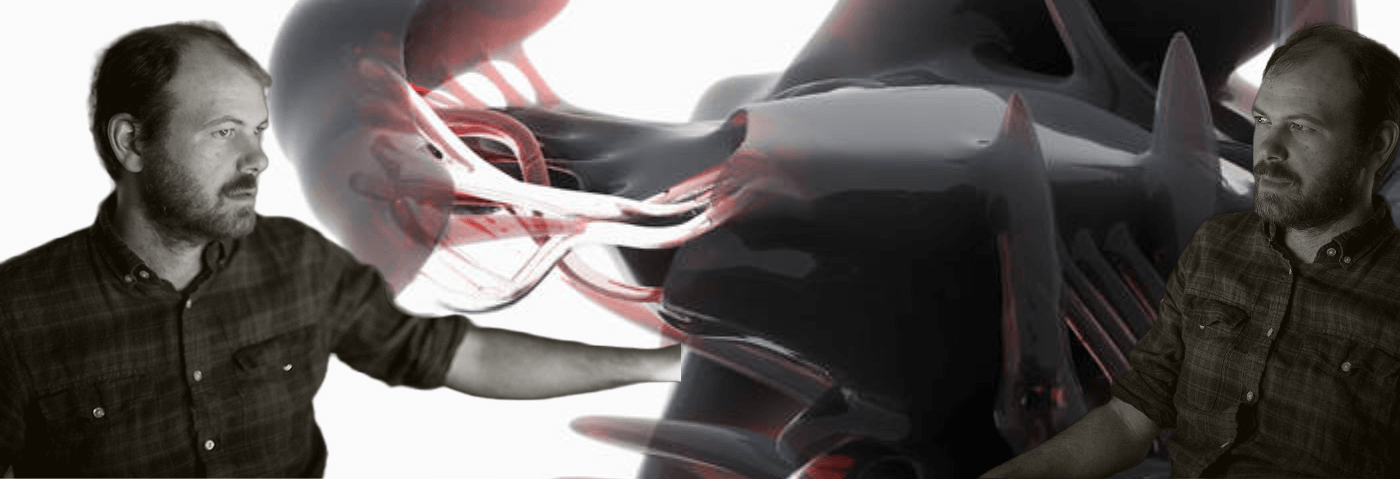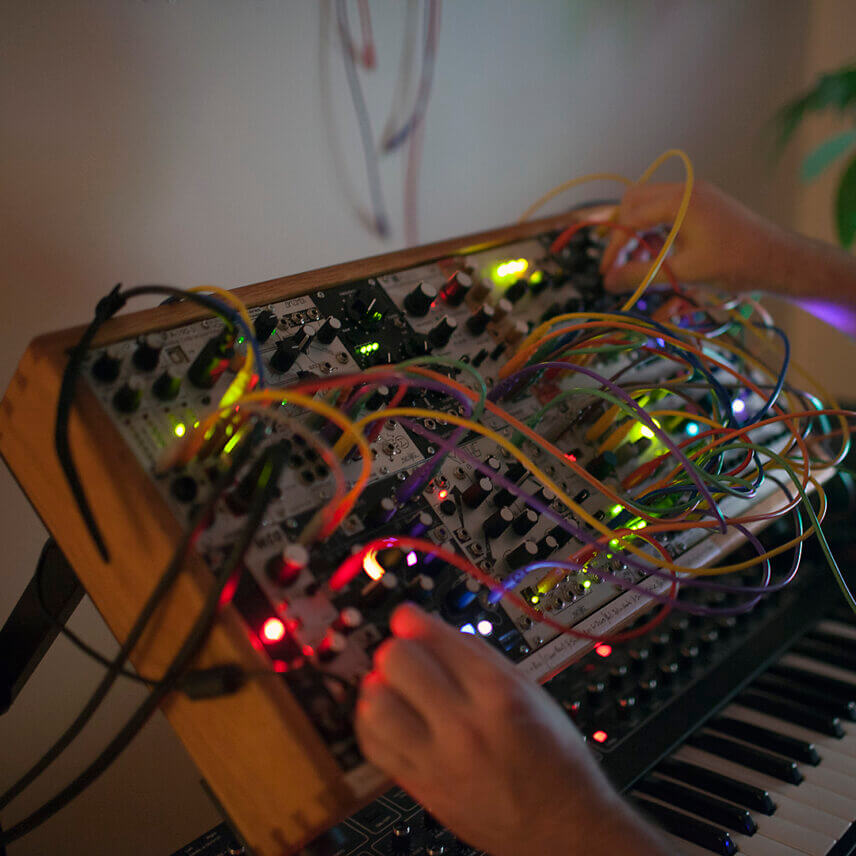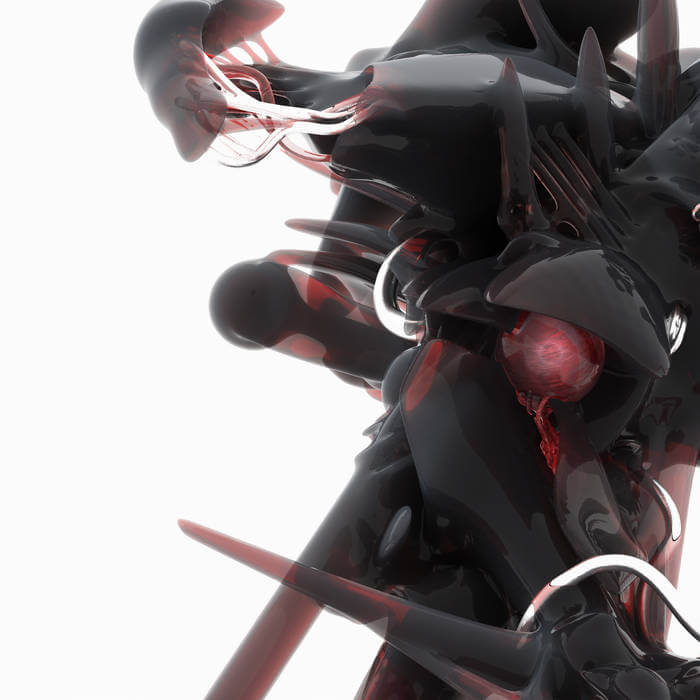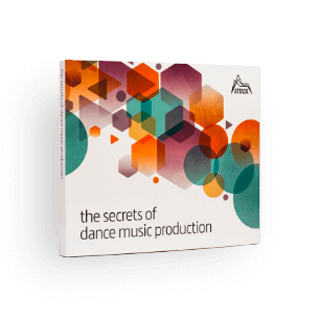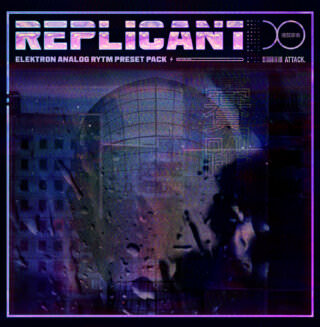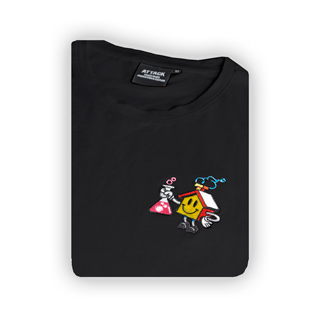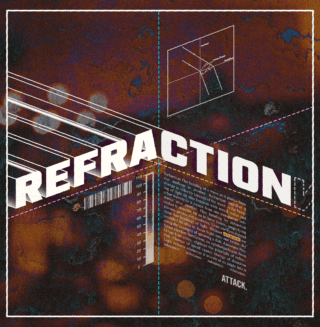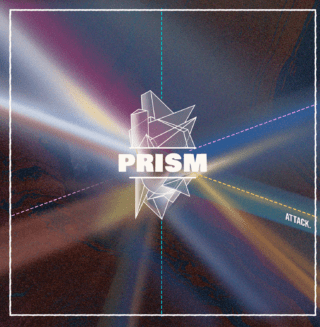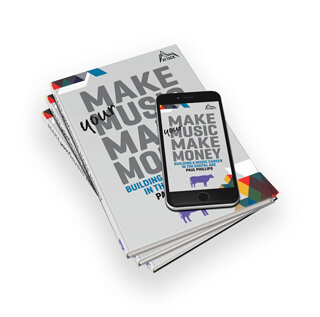Chicago composer Conor Mackey aka Lynyn has recently released his nine-track album “lexicon”. If you are a fan of Aphex Twin, Squarepusher and forward-thinking IDM, you’re going to get behind this. We asked him to run use through it, track by track.
At Attack we probably receive 100 plus promos a day. How is it possible to listen to everything? The answer is it’s not at all sadly. However, we were delighted to stumble across Lynyn earlier this year whose music is clearly a step above the usual. We were blown away by ‘uja end‘ after hearing it for the first time and were keen to find out exactly how he makes music.
The Chicago-based producer breaks down in incredible detail the concept of the album and how each track was made. If you’re looking for the ‘tutorial of the year’, you’ve come to the right place. In his own words, Lynyn breaks it down.
After collaborating with Nnamdi Ogbonnaya on the ‘Are You Happy’ EP and remixing Sen Morimoto’s “Jupiter” track, Lynyn releases his debut album ‘lexicon’. We asked him to give us an overview, to which he says, “‘lexicon’, to me, simultaneously feels like a beginning and the continuation of a musical language I’ve been cultivating for a long time. My approach to this record began with establishing some rules for myself – which is something I had never really done previously with my electronic music.
I wanted to severely limit the number of software synths and virtual instruments, and focus primarily on using the hardware I had available, which was an 8-voice Prophet Rev2 and a small Eurorack system I had recently assembled.
I wanted to treat the two pieces of gear as the ‘instrumentation’ for the album, much like when I would compose for an orchestra, chamber ensemble, or my band where the instrumentation is fixed. I figured this ‘instrumentation’ limit would give cohesion to the tracks and be a sort of invisible hand that would guide my compositional decisions. That being said, there are plenty of percussion samples that have been loaded into virtual samplers, I allowed myself that luxury!
I firmly believe that any sound object can be a starting point for a piece of music. For me, the first step is to find one sound, melody, chord progression, instrument, or synth patch that implies something else in my mind. From there it’s just a matter of following my instincts and discovering or creating the space for interesting things to happen. Much of the material on ‘lexicon’ began as isolated experiments and then was further refined into music.
Buy Lynyn’s ‘lexicon’ on Bandcamp.
All of the tracks were written on a 2010 iMac running Logic Pro 9 with a Focusrite Saffire Pro40 Firewire Interface. Totally outdated but I had been writing on this setup for 15 years. I wanted to use the opportunity to make one more fully realized project before upgrading everything and moving on.
The final step in the process consisted of exporting all the stems after the composition and initial mixing phase was complete and bringing them to my good friend, longtime collaborator, and phenomenal engineer Steve Marek.
Together, we went through a second stage of mixing in Pro Tools. We sweetened individual elements using digital tools and set up an analog summing chain that included an IGS Tubecore Mastering compressor, Neve Portico II Master Buss Processor, Overstayer Modular Channel, TK BC501-GR 500-Series Stereo Bus Compressor, Neumann PEa EQs, and Shadow Hills Equinox Summing Mixer.
uja end
The impetus for this track came from an experiment using Make Noise’s Mimeophon to do some Karplus-Strong synthesis. I love this technique and it pops up all over the record. This is the primary sound that’s heard at the drop at 00:54 and subsequent iterations of that section. The onboard Skew function was used to get the stereo spread and create slightly different pitches so it sounds like two separate instances.
The haunting higher-pitched monophonic lines were created by improvising melodic fragments into the Mutable Instruments Elements module. Those were then recorded into Make Noise’s Morphagene and played back with modulation sources controlling various Morphagene parameters. I recorded long takes and edited those down.
Other notable sounds include the chords that begin at 01:53, created with the Rev2, the registrar shifts were created by assigning a slow, synced square wave LFO to the pitch of the second oscillator. Many of the sudden interjecting noise elements were also created with the Rev2 with all sorts of performative controls like velocity, pressure and mod wheel, mapped to various destinations like LFO speed and amount, oscillator pitch, and fx parameters. I’d mostly improvise and then edit takes down.
The active bassline at 03:43 is the Erica Synths Wavetable Oscillator. Wavetable position and wavetable bank were modulated using random stepped LFOs from ALM Busy Circuit’s Pamela’s New Workout module. I did some hands-on modulation of a Doepfer envelope that was controlling the filter cutoff and recorded many takes that were then comped together for the end result.
icenine
The impetus for this track came from a neutral, triangle wave Rev2 program in chord mode doing the dotted rhythm at the very beginning.
This track features a lot of Mutable Instruments’ Plaits macro oscillators. The dusty white noise hits in the intro as well as the higher pitched chords that enter at 00:13. I used some envelopes triggered by the gate signal for the chordal patch to modulate the timbre and morph parameters to achieve some variation on each hit.
The active percussion throughout is Plaits again, this time the Model parameter is being modulated by a random stepped LFO from Pam’s New Workout (PNW) within a tight range. The module is triggered by MIDI patterns written in Logic and then I then put the output into the Mimeophon and improvised live modulation to achieve some glitchy effects. Recorded many takes and then comped together the best bits.
scrim
I started with building out percussion on this one. The kit is a collection of various foley and field recordings, a circuit bent Speak & Spell, and rhythmic reverb impulse responses.
The long crescendo starting at 01:18 is a single Rev2 patch and culminates in the entrance of a sort of broken, stuttering patch that was created by running the Rev2 through Mutable Instruments Clouds and modulating the Density parameter, then pitching it up an octave.
I was particularly fond of the snare sound that enters at 01:40. Created using Mutable Instruments Elements, I modulated timbre and geometry to get every hit to be slightly different.
All the harmonic glitchy elements that begin at 03:04 were created by recording the Rev2 parts from the previous section into the Morphagene, and then using PNW and MakeNoise Maths to do modulation on basically every possible parameter.
in dust
This was the first track I wrote on the album. The primary percussion kit is mostly sampled from a person working a loom, as well as recordings of a guard opening and closing cell doors with jangling keys in a prison with some great natural reverb.
The bass is the Rev2 with some pitch modulation created from the onboard aux envelope and tuning the second oscillator almost half-step off from the first to get that Reese-like undulation. Filter cutoff modulation was controlled by the mod wheel and performed in real time.
Like most of the other tracks on the record, this one utilizes the awesome power of alternate tuning systems that comes on the Rev2. The effect is subtle but I like the instability of certain intervals where they are slightly wider or narrower than 12-TET. Using these alternate tunings sometimes created problems when introducing pitched elements with the modular, so I often had to make subtle adjustments to the modules’ pitch to get the tuning to sit right.
A couple of other notable sounds include the patch that enters at 03:32 and the wild LFO synth at 04:49. The former is a perfect example of what I love about working with modular, in that it was completely unexpected. So unexpected in fact that I have very little recollection as to what it was! I know that MI Clouds was involved, but can’t remember what the source was.
I know I was modulating pitch with a randomly skipping gate signal and using random sources for density and size. The synth at 04:49 is the Rev2 and I took advantage of the polyphonic LFO. The notes in the chords are slightly offset in their entrance so that it achieves this kind of cascading effect where each note is brightening in timbre at a different time.
memory
Out of all the tracks on the album, this one took me the longest to finish. It started with all the percussion (enters at 00:32) which was created with a modular patch that probably used up all my cables, and at this point, I can’t really recollect what was going on. I believe it began by recording a bunch of foley and field recordings into the Morphagene. There were a lot of generative rhythms and modulation happening, in addition to some hands-on parameter modulation. I recorded several takes that were probably 12-15 minutes each. The final result is the product of lots of painstaking editing, taking small sections (sometimes maybe just a hit or two) and compositing them.
In addition to all of the polyrhythmic stuff happening, the time signature is 4/4+17/16. There’s a break in the middle (01:44) where it goes back into straight 4/4 that’s dominated by a melodic patch that’s the Rev2 into MI Clouds, with some precise pitch modulation from a Maths envelope triggered by PNW to get that rising note on beat 2.
vnar rush
The first 2/3rds of this track are centred around a modular patch that was created by triggering the bass drum of Plaits from the Synthstrom Audible Deluge sequencer and routing it into the Mimeophon to do some of my favourite – Karplus-Strong!
I also set up the Deluge to control CV for the Mimeophon’s micro rate and created additional independent sequences to control other parameters like the decay and pitch of the Plaits bass drum and the colour and zone on the Mimeophon. This was all before there was any other material so I just created a bunch of sequences, improvised, and recorded several long takes. The rest of the melodic and harmonic material that accompanies that Karplus-Strong instrument is in 24-TET.
At 03:22, a wavering synth enters and marks a transition back into the quasi-12-TET territory. Behind that synth is a recording of the Firewire cable noise from my audio interface gained up super high. The bass at 04:26 is the Rev2 with some gnarly distortion and the Logic stock ring mod plugin.
stumbling
This tune also started as extended takes of some generative, improvisatory modular patching. This time I was using a combination of MI Elements and the Morphagene into the Mimeophon, and MI Clouds with all sorts of modulation from PNW and Maths. The metallic hits and sweeps that open the tune are from those takes and material from those sessions is sprinkled throughout the whole tune.
The vocals were recorded into Morphagene and spliced, and then I modulated the pitch with PNW to get the whole step oscillation. Erica Synths Wavetable Oscillator makes an appearance at 03:10 as the active bassline with wavetable position and bank being modulated by random stepped LFOs from PNW. It’s also one of the basses at 05:10 with some slower envelope modulation and layered with the Rev2 with plenty of phase distortion applied.
The little break that sounds like a metal tube bouncing off the floor at 05:45 is MI Elements really showing off its physical modelling capabilities.
amund vise
I started this tune wanting to write something in 7/4 but the main beat pattern that I wrote ended up implying a different meter. The grouping is 3 bars of 4/4 then a bar of 2/4.
The kit is a combination of a Kontakt bass drum, snare from Plaits running into the Mimeophon with some random gating that turns on the wet signal, and a hi-hat pattern that was generated by slicing hats from a breakbeat and recording that into the Morphagene. I then randomly gated the Morphagene playback and used a random step LFO to move between splices using the organize parameter.
The bass that enters at 00:37 and later in the tune is the Rev2 and MI Elements layered together. The bass in the ‘chorus’ is two layers of Rev2 – one uses the onboard distortion and provides the lows, while the other has been high passed and run through Logic’s phase distortion plugin which can get a gnarly, digital sound.
To make the breakbeat section, I wrote out the drum pattern then recorded some transposition modulation using the pitch wheel, and did several takes while messing around with Sugar Bytes’ Turnado plugin. Erica Synths Wavetable makes another appearance here, treated in much the same way as previous tunes.
puffling
I wrote this to be a short, melodically simple tune that would bring the album to a close. It features a lot of foley and field recordings including insect wings, glassware, washing dishes, and camera noises.
One of my favourite synth patches in this one enters at 00:25. It’s the Rev2, with flanger depth and speed being controlled by the mod wheel.
The arps at 02:10 were made with the Rev2 and are two layered programs that both have the arpeggiator on but at different tempos to get a sort of ‘strummed,’ stochastic sound. This was then layered with Plaits, which is the sort of wind chime-ish sound that occurs simultaneously.
Buy Lynyn’s album lexicon on Bandcamp.
Follow Lynyn on Instagram.
